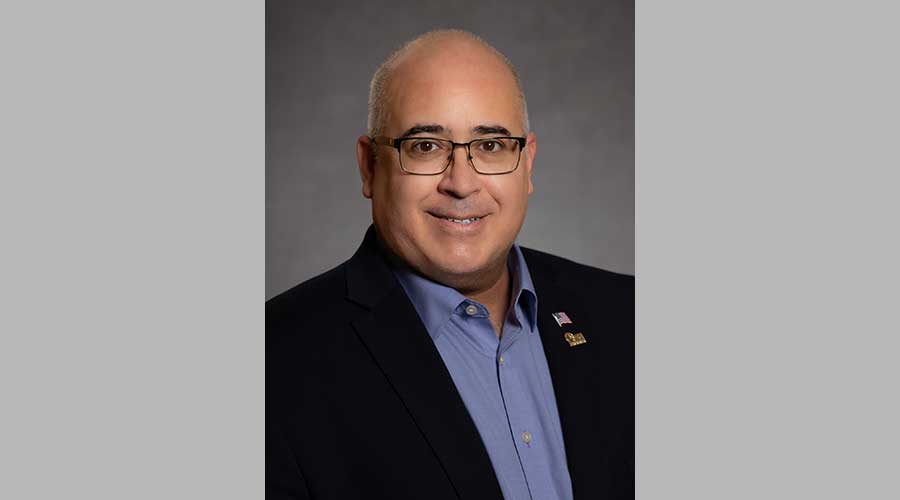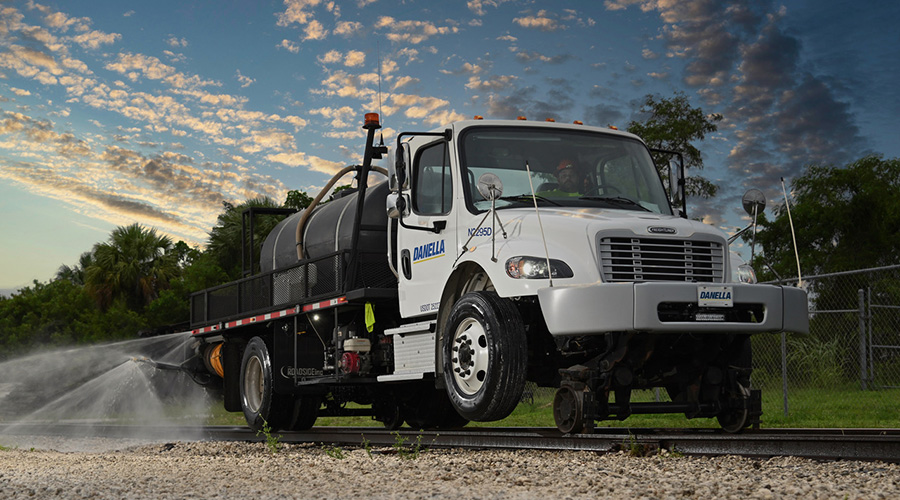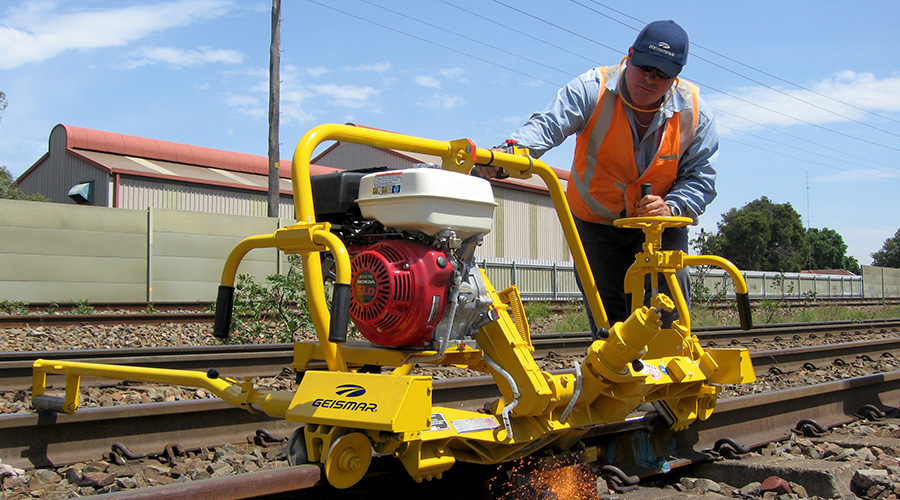Stay updated on news, articles and information for the rail industry
August 2013
Rail News: MOW
Railroads call on suppliers to develop fasteners that last longer and are easier to maintain
— Compiled by Howard Ande
With more heavy freight trains and higher-speed passenger trains zipping along track and traversing super-elevated curves these days, demands on rail infrastructure are more stringent. So, fasteners need to hold up.
A variety of rail fasteners are available to help railroads bolster their heavily used track, and suppliers are trying to add more to the mix.
"We have developed and introduced more than 30 new products to the market during the past two years," said Wes Hodges, vice president and general manager of fastener supplier Amsted RPS, in an email.
Suppliers also are aiming to incorporate advanced manufacturing techniques, adopt new materials and reduce research-and-development time to expand their lines. For Amsted RPS, three-dimensional modeling, finite element analysis and a test laboratory help hasten R&D.
"We can now take a new product from the drawing board to lab-tested prototype ready for field trial in a matter of weeks when just a few years ago, it would take us several months," said Amsted RPS Director of Engineering Jose Mediavilla.
To gauge ongoing R&D efforts and evolving product lines, Progressive Railroading contacted six fastener suppliers. Their emailed responses follow in alphabetical order.
Amsted RPS
Rail anchors continue to be a core product line for Amsted RPS, as they have for more than 85 years. But the company now offers a broader range of fastening solutions, including Safelok-style clips, various bonded direct-fixation fasteners and embedded rail products, said VP and GM Wes Hodges.
The company's MACRO Armor line of abrasion-resistant products for concrete ties have evolved since their fall 2011 introduction and now have been installed by four Class Is, he said. MACRO Armor products are designed to solve the problems of rail seat abrasion and insulator wear that have plagued concrete ties for several years, Hodges said.
Introduced last year, the MACRO Armor Repair Plate is designed to repair abraded concrete ties. The repair plate acts as a form and allows epoxy to be pumped through the plate to fill the void in the rail seat caused by abrasion.
CSX Transportation installed the plates on a Tennessee line in April 2012. Amsted has determined that the plate's installation time has been cut by about 25 percent compared with existing methods due to a lightweight design and improved installation techniques, said Hodges.
Recently, Amsted formed a joint venture with Switzerland-based Schwihag AG to manufacture "Skl" screw-type fastening systems for global heavy haul customers.
Amsted plans to establish new manufacturing capacity at its Atchison, Kan., facility for the joint venture to provide North American Class Is "high-performance, Buy America-compliant products," said Hodges.
In January, Amsted RPS introduced the first product in the new Skl line: the ME63. The screw-type, fully captive and insulated fastening system includes a ME1 clip, rail pad, abrasion plate, field and gauge guide plates, and screw spike. The ME63 offers less stress in the clip, a higher fatigue limit and interchangeability with existing screw-type fasteners, according to Amsted.
Last year, Amsted also partnered with edilon)(sedra, a Netherlands-based firm known worldwide for its innovative noise- and vibration-reducing products, to produce embedded block, embedded rail systems and resilient Trackelast pads, said Hodges.
"The edilon)(sedra technology is quickly achieving acceptance in North America with installations during the past year for transits, freight railroads and ports," he said.
The company recently introduced the Amsted RPS Under Tie Pad (UTP) by edilon)(sedra. UTPs are elastic polymer layers affixed or integrated on the underside of a concrete or wood tie for use in ballasted track to prevent ballast degradation.
Amsted also introduced the Loadmaster Timber Tie, which features the company's Loadmaster technology adapted for use on open-deck timber bridges.
L.B. Foster Co.
L.B. Foster Co. offers a line of resilient fastening systems, including Direct Fixation Fasteners (DFF), resilient ties and booted rail systems. The needs of various transit systems, including those in New York City, San Diego, Miami and Seattle, are similar yet require different rail support products, L.B. Foster officials said.
"We have the capability to vary our product offerings and provide specific solutions based on customer requirements," said Greg Lippard, vice president of rail product sales.
The company can design, develop, tool, manufacture and qualify products based on customer performance needs through rapid prototyping and in-house testing capabilities, he said.
In 2011, L.B. Foster developed a DFF system utilizing a popular European bolted spring clip design.
"The North American market for this type of clip is very limited, but we recognized a specific customer's need and fulfilled their requirement," said Lippard. "We have other variations in process and hope to bring them to market, possibly in the first quarter of 2014."
Currently, transit customers' demands center on increasing vibration attenuation and enhancing electrical isolation, he said. To that end, L.B. Foster later this year plans to introduce a new DFF featuring improved stray current characteristics.
A certain amount of electrical current flows through the running rail return, which needs to be isolated from the ground. Electrical demand has increased because transit systems are employing more vehicle consists, and there's a greater potential for stray current that will corrode any metal it contacts, posing safety concerns, L.B. Foster officials said.
In addition, transit systems continuously operate in populated areas that are sensitive to vibration, so there's a higher demand for vibration control, they said.
Lewis Bolt & Nut Co.
Lewis Bolt & Nut Co. manufactures a variety of fasteners for track, structures and grade crossings. Since 1927, the company has produced track bolts, frog bolts, screw spikes and Sealtite Hook Bolts for bridge decks.
The company's more popular products are the Evergrip™ and Permagrip™ spikes, said Dave Barry, Lewis Bolt & Nut's vice president of sales. Both spikes, which are used in place of traditional screw spikes or track spikes, offer improved gauge control and the ability to be driven or turned in, he said. Fins above the threads help prevent premature backout.
Introduced in 2003, the Evergrip is used with round-holed plates and can be driven in with the Nordco CX or SS Spiker. Introduced in 2005, the Permagrip is designed primarily as a replacement or complement to track spikes and fits in three-quarter-inch square holes.
"Being a manufacturer gives us great flexibility, as we can produce a product on very short notice, to our customer's specifications, and deliver it when required," said Barry. "Customers today are more demanding than ever as they must meet their own customers' strict timelines."
To that end, Lewis Bolt & Nut in the first quarter finished adding warehouse space next to its La Junta, Colo., plant, primarily to store and stage products that can be shipped at a moment's notice, he said.
Pandrol USA
Since its founding in 1937, Pandrol USA has produced more than 2 billion rail fastenings and built a customer base that now exceeds 410 railways in more than 100 countries.
The company's resilient fastenings continue to take market share from the traditional North American cut spike system, particularly on heavy haul track with high degrees of curvature and grade, Pandrol officials said.
Railroads are seeking fastening systems that can withstand the challenges presented by demanding operating conditions, providing both the holding power and durability required, they said.
To meet those demands, Pandrol continues to upgrade and improve its product line and manufacturing facilities. The company's fastening plant in Bridgeport, N.J., now features streamlined production capabilities, including robotics, Pandrol officials said. The firm instituted lean manufacturing principles to gain a more efficient production flow from raw materials to final shipping with less movement, they said.
In addition, Pandrol in recent years has spent millions of dollars on a captive plastics plant near its Bridgeport facility. The supplier continues to add machinery to increase production of tie pads and insulators, including two additional injection-molding machines and one smaller injection-molding machine.
To determine the best plastic materials for insulators and pads in differing operating conditions, an extensive R&D program is under way, assisted by railroads and resin manufacturers, Pandrol officials said. The program aims to develop parts that can meet tough operating conditions and increase the life of plastic parts, they said.
In terms of its current product line, Pandrol has upgraded its VICTOR plate system for wood ties. The company modified the shoulder design, strengthened the system, and alleviated torque and turning issues that could occur under severe operating conditions, Pandrol officials said.
The VICTOR system combines the durability of an AREMA tie plate with the benefits of resilient fastenings, they said, adding that the flat tie plate provides a bearing area that's 37 percent greater than existing plates for resilient fastenings.
United Steel & Fasteners Inc.
United Steel & Fasteners Inc. (US&F) has obtained ISO 9001-2000 renewal certification for 2013-14. The accreditation, along with an AAR M1003 certification and National Voluntary Laboratory Accreditation Program-approved on-site laboratory, has been instrumental in gaining wider acceptance of the company's products from Class Is, regionals, short lines, industrial railroads and transit systems both in North America and around the world, said US&F Vice President of Sales and Marketing Robert Fiorio.
The company's "Beaver" twin-lead timber screws (newly designed in 2012), "common standard" screw spikes, AREMA-specification spring washers, all-metal square locknuts, 1-3/8-inch-diameter grade 8 frog bolts and "G" elastic rail clip fasteners have been approved and now are utilized by all rail market segments, he said.
US&F also offers a "comprehensive range" of bridge fasteners, such as forged head hook bolts, one-piece washer nuts, drift pins, dome and square washer head drive spikes, malleable and ogee washers, crossing timber and tie plate screws, cut spikes and tie plugs, said Fiorio.
In terms of R&D, the company's engineering team is designing and developing more effective and efficient fastening components and systems for testing, evaluation and eventual adoption in the marketplace by responding to customer needs and feedback, he said.
"For instance, we offer different packaging types, weights and sizes based on customer request to make our products easier to ship, store, install, inventory and handle," said Fiorio.
Vossloh Fastening Systems
Vossloh Fastening Systems offers hundreds of product designs for various fastener applications worldwide, said Ron Martin, vice president and general manager of Vossloh Rail Services. Products include solutions for heavy haul, urban transit systems and high-speed lines exceeding 200 mph.
In North America, the company's most popular products, the W series, are used on heavy haul lines and in demanding environments, said Martin. Originally introduced in the 1920s, the W series has undergone various design changes since.
"The flexibility of the design allows applications in the heaviest tonnage curve and grade areas, as well as tangent and yard applications," said Martin.
W series products are designed from the abrasive plate through to the tension clamp to minimize the negative impact in the rail/tie interface, and provide longer tension clamp and tie life with minimal maintenance, he said.
"The design also attempts to eliminate the single point of load stress placed on the imbedded shoulder designs by distributing the load over the shoulder of the whole tie, not the fastener shoulder," said Martin. "Additionally, the system eliminates the need for insulators in signaled territory, reducing maintenance and inconvenient failures of these high maintenance components."
Vossloh's engineering group continually reviews the company's technology and products, and performs lab tests and field installations to achieve the lowest lifecycle costs, said Martin.
Besides heavy haul applications, Vossloh also is trying to bring the same level of product performance to the North American transit and high-speed rail markets. The firm plans to open its first U.S. production plant for the fastening group "to show our further commitment" to North America, said Martin. Vossloh currently operates four plants worldwide.
Howard Ande is a Bartlett, Ill.-based freelance writer. Email prograil@tradepress.com with comments or questions.


 2025 MOW Spending Report: Passenger-rail programs
2025 MOW Spending Report: Passenger-rail programs
 Gardner steps down as Amtrak CEO
Gardner steps down as Amtrak CEO
 Guest comment: Oliver Wyman’s David Hunt
Guest comment: Oliver Wyman’s David Hunt
 Women of Influence in Rail eBook
Women of Influence in Rail eBook
 railPrime
railPrime






